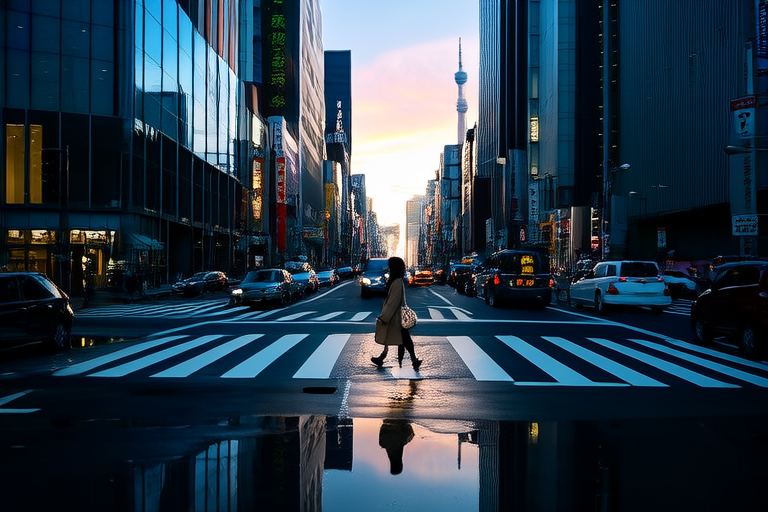The Art of Exploration: Capturing Journeys in Words and Pictures

The Art of Exploration: Capturing Journeys in Words and Pictures
Introduction
Exploration has been an integral part of the human experience since time immemorial. It is a journey of discovery, where we venture beyond the familiar to encounter new landscapes, cultures, and perspectives. For many travelers, the act of exploration is not merely about visiting new places but also about documenting these experiences in ways that capture the essence of each destination.
Travelers often use both words and pictures to document their journeys. Through vivid descriptions and striking images, they aim to convey not just what they saw, but also how they felt and what they learned. This documentation goes beyond mere sightseeing; it involves deep engagement with local culture, history, and people, offering readers a richer, more nuanced understanding of the world.
The Power of Words in Travel Writing
Words have the power to evoke emotions and transport readers to different places. Descriptive language can paint a picture in the mind’s eye, making the reader feel as though they are right there alongside the writer. Famous travel writers like Pico Iyer and Paul Theroux have mastered this art, each developing a unique style that resonates with readers.
Pico Iyer, known for his introspective and philosophical approach, often reflects on the deeper meanings behind his travels. His works invite readers to think critically about their own lives and the world around them. On the other hand, Paul Theroux’s narratives are often filled with humor, adventure, and a touch of cynicism, making his stories both entertaining and thought-provoking.
Narrative techniques such as pacing, dialogue, and sensory details further enhance the reader’s experience. Well-paced stories keep readers engaged, while carefully crafted dialogues provide insight into the characters and their worlds. Sensory details—sights, sounds, smells, tastes, and textures—bring the setting to life, making it more relatable and immersive.
The Role of Photography in Travel Documentation
Photography plays a crucial role in preserving memories and telling stories visually. A single image can capture a moment, a mood, or a feeling that words alone might struggle to convey. However, the difference between tourist snapshots and professional travel photography lies in the level of intentionality and skill involved.
Professional travel photographers understand the importance of composition, lighting, and timing. They know how to frame a shot to highlight the most interesting aspects of a scene, whether it’s a bustling market street or a serene mountain vista. Proper lighting can transform an ordinary photo into something extraordinary, while the right moment can capture the essence of a place or event.
While anyone can take a snapshot, true travel photography requires practice, patience, and an eye for detail. It’s about more than just pointing and shooting; it’s about telling a story through images. These stories can be as varied as the destinations themselves, from the vibrant colors of a tropical sunset to the quiet solitude of a remote village.
Combining Words and Pictures for Maximum Impact
When combined effectively, words and pictures create a more immersive and engaging travelogue. Text provides context and background, while images offer visual confirmation and emotional resonance. Pairing written descriptions with photographs can help readers better understand and appreciate the places being described.
To pair text and visuals effectively, consider the following tips:
- Choose complementary images: Select photos that enhance the written description rather than detract from it. For example, if you’re writing about a bustling market, choose a photo that captures the energy and diversity of the scene.
- Use captions: Short, descriptive captions can add depth to your photos, providing additional context or insight.
- Balance text and visuals: Ensure that neither overwhelms the other. Too much text without accompanying visuals can feel overwhelming, while too many images without sufficient context may leave readers confused.
Social media platforms have also played a significant role in sharing travel experiences and building communities around shared interests. Platforms like Instagram, Pinterest, and YouTube allow travelers to share their adventures with a global audience, fostering connections and inspiring others to explore new places.
Ethical Considerations in Travel Writing and Photography
Representing other cultures and peoples accurately and respectfully is crucial in travel writing and photography. Misrepresentation can lead to misunderstandings and perpetuate stereotypes. It’s important to approach each destination with sensitivity and awareness of the local customs and traditions.
Respecting local customs means adhering to the rules and norms of the place you’re visiting. This includes dressing appropriately, seeking permission before taking photos of people, and avoiding behaviors that could be considered disrespectful or offensive.
Responsible tourism practices also play a vital role in benefiting both travelers and host communities. By supporting local businesses, respecting the environment, and engaging positively with locals, travelers can contribute to the economic and social well-being of the places they visit.
Conclusion
Capturing journeys through words and pictures allows us to share our experiences in a way that is both personal and universal. Whether through evocative prose or stunning imagery, we can inspire others to explore the world and learn from it. Exploration is not just about seeing new places but also about growing as individuals and fostering cross-cultural understanding.
We encourage readers to embark on their own journeys, armed with curiosity and a desire to connect with the world around them. By sharing their stories creatively, they can inspire others to do the same, creating a ripple effect of exploration and discovery.